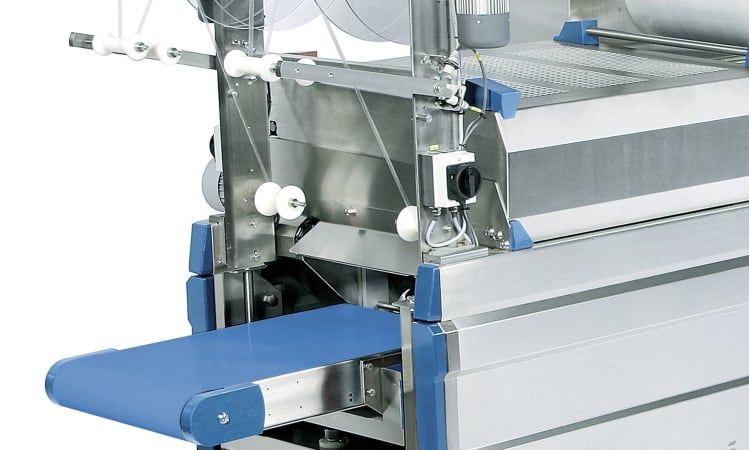Nobody likes to see packaging equipment sitting idle when it should be running – especially when it could cost a business as much as £5,000 an hour. This expense, quoted by an anonymous customer to Sealpac managing director Kevin Witheford, can be exacerbated by the time of the week a fault occurs.
“A programmable logic controller failed on a Friday evening,” recalls Witheford. “The customer in question didn’t stock the item, and it needed to be ordered from Germany to be delivered programmed.” The failure coincided with a weekend, magnifying its impact and leading to 36 hours of lost production between the Friday and the end of the Monday.
For those with a vested interest in making their packaging lines as efficient as possible, overall equipment effectiveness (OEE) has emerged as the most objective and comprehensive yardstick. But some still place their focus on downtime, which remains a principal component in any OEE calculation. Proponents argue it is easier to understand, measure and regulate.
“Downtime is easier to measure than OEE and easier to understand,” Witheford claims. “Everybody seems to put different criteria into OEE and measure it in different ways.”
In the event of a significant shutdown, part of the cost impact for manufacturers will, of course, come from their retail customers. “If you short a major retailer, you could face a fine of £20,000 or £30,000 for a single delivery, and then possibly be fined for loss of profit, too,” Witheford says.
Clearly, the primary message is that the end-user needs to stock spare parts. “Surprisingly, some of the larger companies barely stock any spare parts, and then expect us to courier them over,” Witheford explains. “They tend to be driven by accountants who tell them not to hold parts. Where there is an owner-manager, it happens less often.”
Wider service provision
But from Sealpac’s point of view, this is also about a wider service provision. As well as service contracts, the company offers line optimisation consultancy and training, all of which can help to reduce downtime, says Witheford.
Where customers have a service contract, he claims, they see a reduction in downtime of “up to 80%”. Where staff are fully trained, this is said to result in “as much as 40%” more uptime.
The company quotes customer Banham Poultry as saying that the costs of the preventative service package it has had in place since 2015 have “nearly been neutralised by the drop in breakdown repair and parts costs”. Downtime on Banham’s machines has become “minimal to insignificant”, says the poultry supplier.
Witheford puts all this into a context where manufacturers are typically keener to ‘sweat their assets’ than to invest in new capital equipment. A cynic might argue that a machinery firm selling less machinery is bound to market its service offering more aggressively. But even they would have to admit that older equipment needs to be looked after that much better.
Downtime on packaging lines, historically associated with product changeovers, has been dramatically reduced since the introduction of electronic and servo-driven controls. But even today, it can affect choices to do with packaging formats and production planning.
As flexible packaging machinery producer PFM explains, the wisdom regarding horizontal pouch-filling used to be that if you required multiple formats or sizes, it made sense to work with pre-made pouches rather than a form-fill-seal (FFS) system.
Major savings
But given the major savings available when forming pouches directly from roll-stock, some customers have been willing to work with manual format changeover times of three hours or longer, says area manager Stewart Horspool.
Since 2011, he explains, the company’s D-series range of FFS stand-up pouch machines has been servo-driven, rather than using a cam-shaft, and is completely electronic. “Two years ago, we had 3D changeover times down to 40 minutes,” he says. “Since then, the machine has developed a lot, and changeover now stands at just 15 minutes, on certain formats.”
Among other improvements over this period, he highlights tool-less changeover and the introduction of single-minute exchange of dies.
This 15-minute changeover speed has been achieved by a customer filling pouches with frozen fruit, using a D480 machine, says Horspool. Other food applications of the range include grated cheese and confectionery. Pouches can be up to 240mm width and line speeds can reach up to 130 pouches a minute.
Horspool believes most food manufacturers are aware of the impact downtime can have on their business. “Any customer who has the production demand to run a machine like this, even on a single shift, appreciates the issue,” he says. “The greater their range, the more they appreciate it.”
However, that awareness does not always equate to an ability to accurately measure downtime or its associated costs, Sealpac’s Witheford suggests. Nor is this challenge unique to smaller companies. “There are just as many large organisations in our field that measure downtime less accurately,” he claims. “In fact, some of the smaller businesses tend to feel the pain more, so want to protect against it more.”
Impact on productivity
While parts failure may have damaging consequences for most manufacturers, it is a relatively rare phenomenon. Likewise, changeover times may have only a minor impact on productivity. Where downtime still occurs, the causes are likely to be less obvious, and there may well be more than one of them. Triggers can range from simply running a machine too hard and fast, in a rush to meet demand, to more complex electronic and mechanical problems requiring specialist analysis.
“In our detailed assessments of line efficiency, the biggest cause of downtime is the type of small stoppage that may go unnoticed and may last for just 30 seconds on each occasion,” says Rob Allen, manager of Interfood Technology’s Packing Solutions division. “But taken together, they have the biggest impact on downtime.”
Interfood is sole UK and Ireland distributor of the Sparc Systems range of label inspection, weighing and checkweighing equipment, as well as Buhmann converging and case-packing systems. It also offers as a feature on its lines Plantstats software, which measures OEE and downtime, allocating reasons for downtime and putting the data into a live report format, says Allen.
Initially, he says, the system is likely to allocate causes fairly broadly, putting many of them down as ‘other’. “You can then reconfigure your analysis to drill down to more detail regarding those causes.”
As a rational concept, the advantage of taking downtime as the chief point of reference is clear. And, as any manager or engineer who has stood next to a static, normally profitable line, waiting for it to come to life again, would tell you, it works on tangible, emotional and visceral levels, too.




